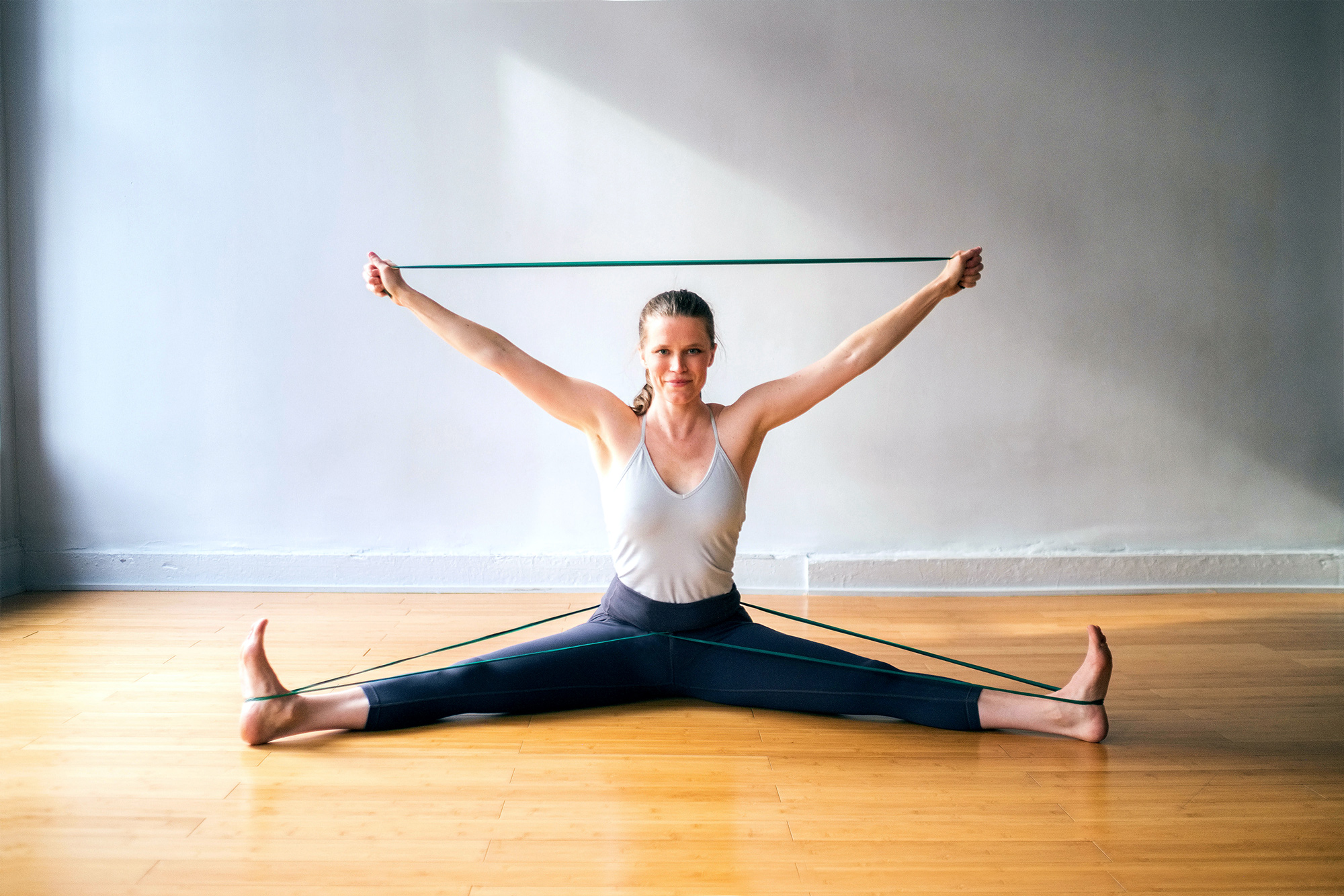
“You can learn something that you’ve known again for the first time. You can see things in brand new ways if you approach them with the mindset of wanting to understand instead of thinking that you already know–of wanting to understand anew.” –Laurel Beversdorf
Laurel Beversdorf is a powerful “Roll Model” in the Tune Up Fitness community for her thoughtful insights and novel contributions to popular movement practices.
As a yoga and multidisciplinary movement instructor, and teacher trainer, Laurel always seems to be on the brink of some new discovery.
Over the past couple of years, these discoveries have evolved into unique classes, workshops, and video programming that bring greater resistance to the yoga room. Born of Laurel’s personal need to address the gaps in her yoga practice, she has incorporated elastic resistance bands into popular yoga poses.

“I’ve become very interested in how to add external resistance to the movement we do in a yoga class, or a space where yoga happens,” says Laurel. “Which tends to be a pretty sparsely equipped room… This sparse decor can mean that the way we are able to load our bodies physically is limited. So one of the pieces of equipment I’ve become obsessed with is the resistance band.”
Laurel’s tenacity when seeking understanding of a topic, paired with her openness to complications (and even major “fails”) along the way have made her a leading voice in yoga and functional fitness.
I caught up with Laurel recently to find out more about her process of discovering, and sharing, new practices with students–then turning them into professional programming she teaches around the world.
Laurel’s story provides a helpful roadmap for how to turn physical injury, or limitation, into an area of strength and expertise. Here are the four distinct steps you can follow to do the same.
Step 1: Study with Teachers Who Think Creatively and Critically
The first step toward expertise, according to Laurel, is to study with inspiring teachers.
“First, study with teachers who inspire you to think critically, creatively, but also thoughtfully about what they’re doing and why… That’s first.”
As many devout yogis have learned, for all the good that yoga asana (movement) practice can do, it isn’t necessarily a complete form of fitness. This dawned on Laurel when her career as a yoga instructor entered full swing.
“As I continued teaching and practicing, I started to feel in my body that I wasn’t always as strong as I wanted to be,” recalls Laurel. “I felt like I was always on the verge of injury or this chronic soreness…the soreness of having done a lot of the same stuff for a long time. So I sought out weight-lifting help from Elizabeth Wipff, who is a strength and conditioning specialist and an extremely experienced strength coach as well as a yoga teacher.”
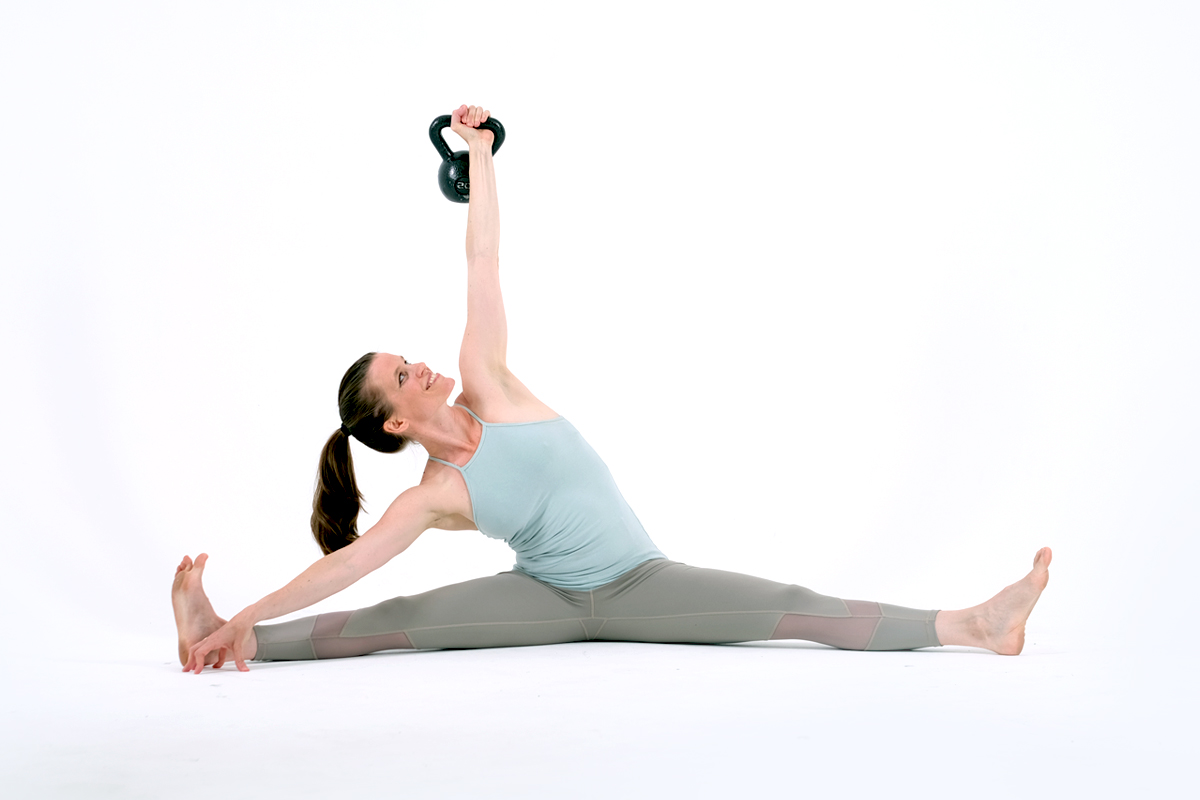
Wipff taught Laurel the basics of weight-lifting while also encouraging her to lift heavy and to progress slowly over time. Part of this meant using resistance bands to “prepare me for the really heavy lifts but also some movement or positional acumen for those lifts.”
Although Laurel had experienced resistance bands in classes with Jason Ray Brown years earlier, this was a lightbulb moment. At this time she realized they could help her overcome the chronic soreness that had set in. “It was really in an effort to address my own pain and discomfort that I felt like my own asana practice wasn’t addressing for me.”
This leads to the next step in how Laurel turned injury to expertise…
Step 2: Get Curious and Play in Your Own Practice
“Practice is second. Make sure that you’re regularly engaging with the material that you’re engaging with as a student,” offers Laurel.
The work with resistance bands didn’t stop when she left the sessions with Wipff, instead she dove in deeper back home. “I went home and took out the resistance bands and just started playing… and playing and playing and playing,” recalls Laurel.
This at-home exploration furthered the work into “a practice of self-discovery” by experimenting with using resistance bands in a variety of postures and exercises.
During at-home explorations, Laurel suggests inquiries like: “What do I feel in the moment? And how does my body feel later on that night? And the next day…?”
Beyond what your teacher shares, be interested in your direct experience of the work on your own. This experimentation means coloring far enough outside the lines that you make mistakes, you discover stuff that doesn’t work, you fail and try again.
“This is really the attitude of curiosity… If we’re on a path of learning ourselves, and honest about what that actually means, it means being wrong. It means failing. And it means then reflecting on that and doing it differently,” offers Laurel.
A great benefit of this, as a teacher, is that you then model open-minded curiosity for your students. “When we approach learning with that attitude we necessarily model it for our students. That becomes, without even trying to teach it, what we end up teaching.”
Speaking of teaching, step three is all about taking your at-home experimentations out to play by sharing them with the world.
Step 3: Share Your Discoveries (in Small Doses)
“Then share it!” Says Laurel. “Don’t keep it to yourself.”
However, she warns to not suddenly change your entire class, as it might give your students emotional whip-lash to walk in expecting what you typically teach, then be asked to practice in an entirely new way.
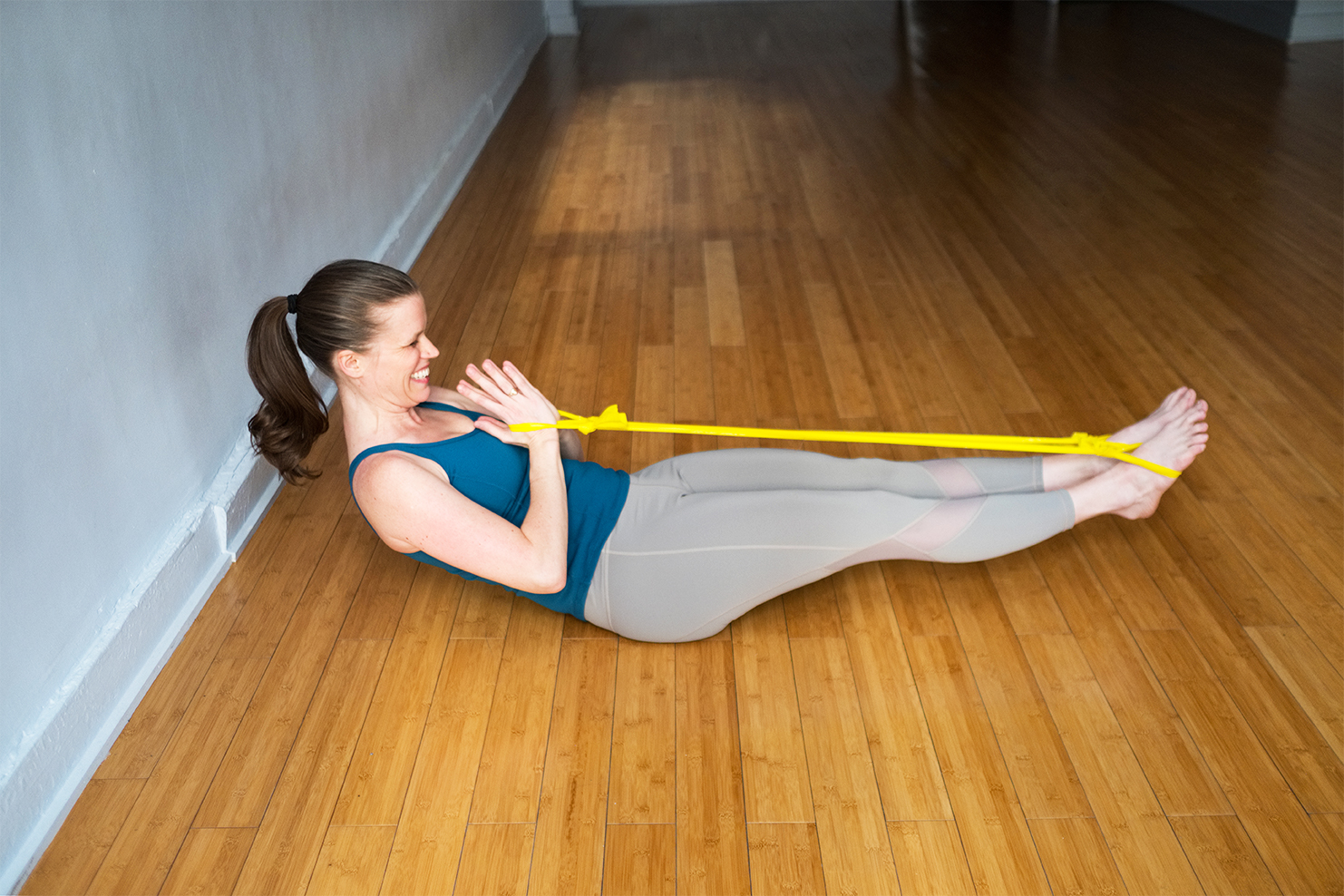
Laurel recommends sharing new material in small bite-sized chunks.
“When you come to your students with new ideas, just do one or two new things in the class. When I started with resistance bands, I’d just bring one or two things in. Same as with the therapy balls. So that people got a little taste.”
As students gradually start to feel the longer-term effects, you can incorporate more of that new work, or begin to develop programming around it that the interested students can participate in.
Furthermore, Laurel encourages sharing new movement findings with a light touch.
For example, if while experimenting in your home practice, you discover a cool new way of strengthening your shoulders that helps address your own physical issues, don’t assume it will have the same effect for your students as it does for you.
“[When bringing a new technique into the classroom] I wouldn’t project it as this magical exercise that will ‘heal shoulders.’ Or that it is universally the best way or that it is better than other ways of exercising. The reason is that I don’t have any evidence to back that up. So it’s purely anecdotal…at the end of the day if you aren’t backing that up, it’s just marketing.”
According to Laurel, separating marketing type messaging from exploratory teaching language will help to share new practices with your students ethically. She notes that you don’t have to make something wrong, to be right.
“I think this is an important piece because our teaching does not exist separately from the capitalistic forces that motivate us to represent ourselves in certain ways. And these capitalistic forces can sometimes be directly at odds with our deeper, truer motivations to help our self, and to help others feel better.
“So what I try to do is that when I talk about what I share, I try to couch it in terms that convey—rather than an air of certainty—an attitude of curiosity and play… I’m more into creating the type of place where there is no hierarchy. ”
Step 4: Keep Studying
The last step Laurel recommends on the path to specialization is to educate yourself on your topic continually.
“The other piece of it is to expose yourself to the body of work out there that’s going to help you think critically about what you’re doing and why,” states Laurel.
“So that when you talk about why you’re doing what you’re doing, you’re avoiding positioning it in a way that is misleading, or that isn’t backed up by modern movement science…share it in a way that is responsible and not misleading.
“I think the phrase ‘you know enough to be dangerous’ is very true. You can know enough to teach a class, private, a posture. But not enough to know that you don’t know anything and therefore make some really classic mistakes.”
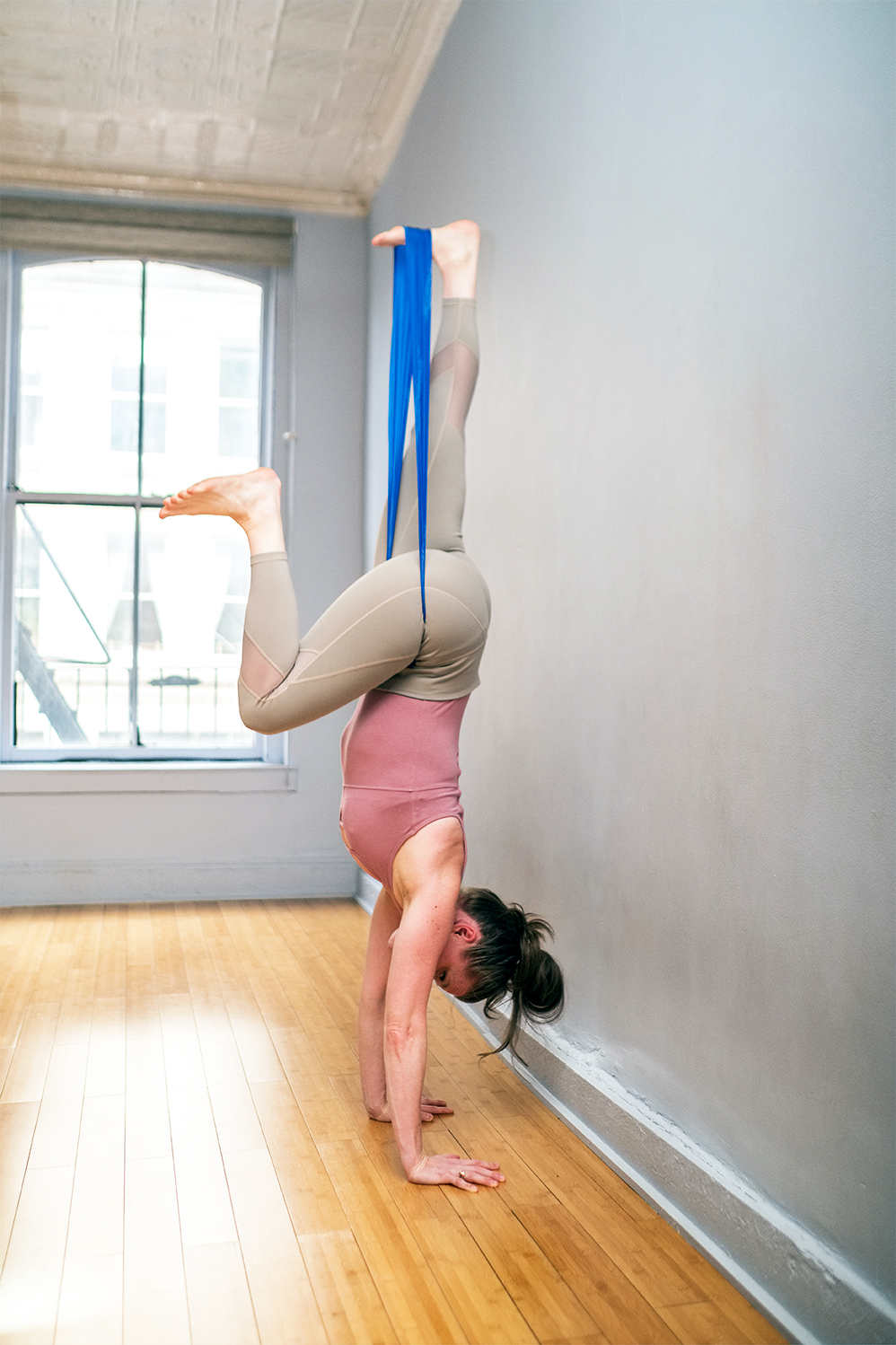
Laurel notes that the more experience she has gained as a teacher, the more comfortable she is not having all the answers. “The real switch was a path toward willingly humbling myself to the enormity of the subject matter I’m taking on and how small I am in relation it.”
However, it is precisely this humility that makes her teaching more influential by leading “with an attitude of open, nonjudgmental inquiry, creativity, and compassion… But I have to keep learning more to be able to do that. Because my job is to help others discern the right path for themselves.”
Want to learn with Laurel? Check out her upcoming Yoga Tune Up® Certification Course here.
Related Article: On Becoming an Empowered Educator: It Starts With Your Practice
Learn more about our Therapy Ball Products and Programs
Interested in video and blog content targeted to your interests



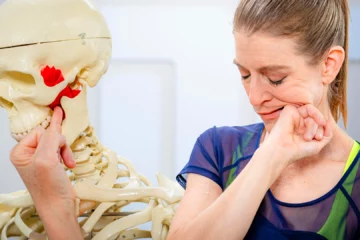
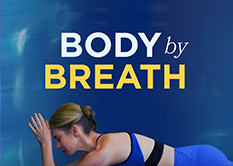



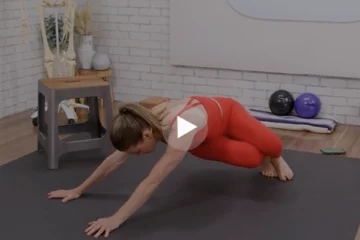
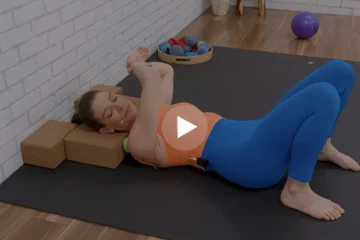


Incorporating resistance bands into yoga practice is a brilliant innovation. Seeing the photo of her handstand with resistance band is inspiring, and testament to her own playfulness and creativity. It is so important for teachers to be excited about what we teach, but I also respect and agree with her recommendation that new ideas be introduced to students in small bites. Sometimes students have to be gently coaxed to step outside their ideas of what yoga is or can be. Yoga is a living art, and one of the challenges of being a teacher is how to breathe new life into the practice, suitable for our 21st century lifestyles, while keeping the essence of the practice, which is inner exploration. Ariel reminds us to have humility, to be ok with not having all the answers, and to support others in their own inquiry.
This is very inspiring! Really owning the forms of movement we have been taught and also allowing ourselves permission to be playful and creative in our experiments… there is so much translation into how we live off the mat as well. What are our bodies asking for? And how does changing things up feel both in the moment and over time? Also, the titration of skillfully sharing in context with students so as not cause “emotional whiplash”… brilliant! Yoga Tune Up embodies and allows for so much of this novel exploration and input. Therapeutic fun!
I love the creative flare and excitement that Laurel brings to the practice. This idea that in our time we should play and experiment in the poses and in movement and bring those finding back to our class is definitely something I need to work more on. I often find I spend more time teaching and then my personal practice suffers for it. But I do take quite a few training since I just find this work so fascinating and always love a good anatomy/biomechanics refresh.
I love the reminders here to know that you don’t know, BUT learn through your body’s experience. I feel I am open to being curious, accepting the lack of my current understanding but I struggle with playing in my own practice. I primarily practice at home, with my family in and out of the space and I prefer to be “lead.” Reading the section about being curious and playing in your own practice feels like a challenge I see as necessary, but also one I know I’ll need to take in baby steps 🙂
I love the emphasis on curiosity here. Every time I have been injured, I find the silver lining by learning everything that I can about that injury and how I might be able to help rehab it. Every injury is different, even if it’s the same type of injury on different people and the approach to healing it has to be different as well. The only person who can feel from the inside how that might be done is you. There are standard procedures and treatments, but by deepening your relationship with that part of your body, learning how it works, you can help support the healing directly.
In the fitness world today, there are so many companies and methods hailing their way as the end all be all. Even within methods like yoga or pilates there are subgroups claiming the same. Laurel’s attitude of humility and encouragement of students to explore for themselves speaks volumes.
What a perfect article for my final day of YTU teacher training! This is exactly what I needed to read before getting on a plane to head back to my students. These points feel like the fundamental lessons that Jill bullet points on Day 1: I am a student of my body; I am a student of what I teach; I study my students. Sprinkling in some small techniques over time while I continue to study and play– is the way. Bookmarking this blog!
Enseigner avec une attitude d’enquête ouverte et sans jugement, de créativité et de compassion… Aider les autres à discerner le bon chemin pour eux-mêmes… Cette philosophie de voir l’enseignement sous cet angle me touche. Toute jeune professeure, vous m’inspirez…La grande famille de yoga tune up m’inspire et mon cœur vibre. Merci
Often, teachers in the yoga and fitness industries are not so comfortable speaking about the capitalist forces that may motivate some of our decision making in terms of branding and marketing our unique offerings. And the truth is I think all of us at some point have been sucked down that rabbit hole of finding the catch phrases that sum up in a nutshell the Why and the What of what we teach. I also reminds me that all the yoga teacher trainings I have taken in the last 20 years really emphasize how their “style” is the best style, and that doing a certain pose their way is THE way to physical prowess and enlightenment. I got really tired of that hierarchical way of offering a movement modality for healing both physically and emotionally. So, I appreciate the fact that you brought this topic to light! For years now I shifted to the concept “Teach what you practice, and practice what you teach”, as Krisnamacharya gave as invaluable advice. Coming from that viewpoint, YES!— thanks for the reminder to offer students all of my strange, curious, weird and wild ways as just one path towards their own personal evolution.
This article speaks to me so much at the moment! I have been involved in a YTU Certification Training and I am so inspired to play with all the tools I have around and find new ones! I am curious and I believe that this desire to learn and create will allow me to show up more fully as a teacher and find my authentic voice as a teacher. Thank you for the advice to introduce new things in tid-bits as not to “whip-lash” your students. I can see how slowly introducing them to a concept will be more warmly received. Such helpful information! Thank you!
I believe that maintaining humility and being confident enough to share a practise with others is what leads others to want to be in your classes. I really appreciate this article and the reminder that we are always a student. Im curious about Laurels practise!
This is such a timely article for me as I am wrapping up my last two days of the Yoga Tune Up Level 1 teacher training. I know my teaching has already been effected by the information I’m gaining and I will want to go home and teach my students my discoveries. I really appreciate the reminder to not change everything all at once. It’s like sound chunking. You don’t have to say everything all at once. You can deliver the info bits at a time.
This is an inspiring article that I think I refer to again and again as as reminder to keep playfulness, curiously and humility at the center when teaching movement (and in all areas of life). As much as the health and wellness industry wants us to believe there are generic solutions for everyone (e.g., easy to sell), the unique individual bodies and processes need to be honored to create healthy and empowered students. Thank you
Laurel’s advice to share the new things in small doses can be challenging for me – when I get excited about something new I’ve been working with I can easily go overboard with sharing too much of it. It’s helpful to think more about balancing the expectations of students with my excitement about the new shiny thing – and also thinking very carefully about the language used to talk about it.
J’ai découvert un cours avec les élastiques et c’est là que j’ai découvert l’enseignement de Laurel. Très inspirant la façon de voir l’enseignement.
Super interesting! I had heard about Lauren and her specialization with rubber bands. It really makes you want to go to training! 🙂
The more I am interested in human movement, the more I discover different techniques. It’s fascinating. It is thanks to my great curiosity that I discovered Yoga Tune up. The more I discover Yoga tune up the more I love it.
Can’t wait for my class with Laurel 🙂 Someone told me that the bands would be good for me since i’m hyperlax. Adding resistance to control my mouvement might do the trick. Will see soon.
The yoga with resistance band seems so interesting. It is a new way to improve the strenght. It’s true that we neef to keep an open mind and always want to learn new things and be curious!
I absolute love Laurel’s message of staying curious about your field of practice and having humility as a teacher. There’s always more information out there and it’s impossible to know it all. It gives me a whole new respect for a teacher, no matter how educated they are, when they can admit they don’t have the answer to something. Id much rather make it into a learning experience for the both of us instead of being told false information for the sake of giving an answer.
Thanks for sharing!! The most joyful journey on yoga for both personal practice or teaching is to keep learning and to discovery new things to share. Thanks again! 🙂
This is why I love learning from Laurel. Don’t assume, stay curious, keep studying, play outside the lines. This is how we learn and I too am crazy for the bands. The woke me up!
So very motivated to learn more about adding resistance bands to my classes. ?
Having just returned from the Yoga Tune Up teacher training, I have been sitting with how to incorporate all that I have learned into my current teaching. I am very enthusiastic about teaching this amazing work and my tendency is to go all in! However, I really appreciate your advice introducing things in small doses. It’s important to incorporate new moves when they are relevant to the sequence and peak pose. In my first class back, I felt that I laid out too much new material and the students seemed overwhelmed. Thanks for this advice!
I just took the YTU Certification program with Laurel and she was fantastic! She was so informative and you could definitely see all of the characteristics noted in this article shining through. She inspired me to adapt my current fitness program to incorporate some YTU poses but really to be open to changing things up and not following such a strict, regulated program.
So helpful! Loved Laurel’s insight and humility as I figure out my path of teaching and learning.
Ariel! All kinds of yes on your article. Your first initial point on studying with teachers who think creatively and critically and who also inspire you resonated with me so much. Studying with teacher like Jill Miller allowed me to meet a new part of myself for the first time. It blew the lid off of my teaching so to speak. My teaching evolved. Overnight! My students rushed to me after class with comments and questions and became infected with my passion and newfound inspiration of the mind, body and movement practice.
The point on getting curious and playing with your own movement practice seems to be key toward deeper exploration and acquiring a richer understanding of the body in motion. Understanding my own body has always been important in my teaching. If I don’t understand it, I don’t teach it. I might break down a facet of movement that I do understand and teach that. In turn, that opens up questions and answers, in my own body and in my students’ bodies.
Share the knowledge. Yes! The more we give away the more we can take. We build incessantly the more we engage with knowledge and application. Hoarding it will only close down our process. There are no secrets! The true masters and experts are selfless servants who truly care and are adored and loved by many. That dynamic is a reflection of how they personally love themselves and others, it reflects the depths they engage in with their own bodies, minds and spirits. And this, in turn, affects the learners, the students and the admirers.
This post epitomizes my progression in the world of using movement as a healing tool for clients. I’ve been coping with so many frustrating physical injuries in the last few years, but inevitably the blessing that comes of it all is that Not only am I more self aware, but the knowledge I gain from healing myself has been my greatest teacher and tool for teaching others !
Guiding curiosity and movement exploration within a space is a beautiful approach to teaching that mimics movement research or improv within the modern dance world. To be this guide requires increasing knowledge and understanding the body-being a good student of your students so this will be a safe place and space for such exploration
Laurel is an inspiration to “make real” the YTU phrases I am a student of my body and I am a student of what I teach. Never stop learning!
Worth the discussion always. Staying to to oneself and teaching from a place of authenticity. Thanks for sharing.
I have begun teaching more classes in a week than I ever have before and reading this article is inspiring. Not only have I felt the need to inspire my students to explore in their own practice, but the more I have moved through my own practice I am finding that I have wanted to add weight training or something to balance out the yoga practice. Thank you, I look forward to learning more from my teachers and my practices.
Nice discussion about the need to continually be a student, learning and bringing small pieces of that to our classes. Being creative allows us to stay open to all possibilities.
Creo que es muy importante empezar a hablar con más honestidad sobre nuestra práctica y sobre nuestro cuerpo. Se ha vuelto un tabú hablar sobre lo que nos duele o sobre nuestras lesiones. A mi me sorprender ver cómo casi todos los maestros de yoga que conozco están lastimados o sufre de dolor crónico. Esa fue una de las razones por las que me interesé en YTU. Me di cuenta que tenía que hacer algo más, empecé a hacer aparatos en el gimnasio con un poco de peso y he notado un cambio enorme en mi cuerpo. El mundo del yoga está enriqueciéndose con estas aportaciones. Gracias.
I feel very related to this article because I also have the feeling that something is missing in my yoga practice. So many times during my yoga practice I feel pain in my joints and I always try not to push myself very hard in my practice. I recognize that I need to complement my practice with lifting weights and adding some resistance. Thanks for the inspiration !
Is great to recognize the place of your body during your practice in which you can feel weaker, there’s nothing wrong with it and by recognizing this you can be more able to stregthen this parts of the body. Using other tools like Laurel using the resistance bands can be very useful and make a great difference on your daily practice in order to feel better and getting further in your practice.
Ariel, thank you so much for sharing this! I have been doing my best to separate marketing type messaging from exploratory teaching language to give my students the best experience possible. So important are our words. Offering postures with an attitude of curiosity and play I very much agree with. Most people take themselves and the movements (or lack there) of their body way too seriously… it’s so vital to encourage the freedom to just see what happens, without attaching harsh self judgement to the outcome. I most definitely feel you about the more experience I’ve gained as a teacher, the more comfortable I am with not having all the answers. It’s been very freeing to say the least.
Wow! I really resonate and agree with all of these points points. It’s very full circle – study with teachers who are creative and curious (but also explain why), explore with your own self-inquiry (i.e. personal sadhana), teach what you discover, and then study some more. I believe that a teacher is, first and foremost, always a student and it is important to continue discovering more and challenge ourselves critically as to why we do things. To seek out what our “weaknesses” are and turn them into our own strengths is very inspiring and one way to further evoke the notion of “balance” we often preach about. Lastly, I love the reminder to not be dogmatic about what we discover as a “prescription” for all, but merely an anecdotal reference that worked for me and may work for others. I think our goal as teachers is to inspire others to discover what works for them and their bodies and their practices in a healthy and sustainable way.
I love this article! It is so true, for any fitness instructor, always be curious about what, how, and why, so a creative and critical teacher will inspire us in a complete different aspect with their knowledge, then take their knowledge into our own personal practice, experience in our own body, then share with our students little by little.
The quote of Laurels when she states “convey ,not introduce a concept with a hierarchy attitude” is excellent advice.
Thank you for this. I’m partway on this path of having created some exercises through my own curiosity and slowly introducing them to my classes. I like your inclusion of approaching it with humility. That makes it less scary to teach and puts us and our students more at the same level. I feel so much better when I feel like we’re all equal and on the same page.
Continually learning has been what I have enjoyed most in my yoga teaching and my own practice. I am always amazed at how many different takes there can be on any one pose by simply changing one’s focus and perspective. Being inspired by a variety of teachers really does help to keep my teaching and own practice fresh and pushes me to be more creative. For example, you have inspired me to get out my bands and play mor e. Looking forward to seeing what I can bring to my students next.
Some great ideas! I am in the process of incorporating more strength and resistance into my training. It’s what got me interested in Yoga Tune Up 🙂 I will play around with my resistance bands today and see what comes up!
I love the muscular engagement that using resistance bands and or weights into classic yoga moves. It brings a solid strengthening component to classic mindful yoga moves.
I love incorporating resistance bands and kettlebells into vinyasa-style movement! It add another level of awareness when moving in space and allows for more muscle engagement in mindful movement!
From personal experience, I also believe that resistance bands and weights are a perfect compliment to yoga as a means to strength train. However, most certainly requires guidance from a trained professional. Thank you for the interesting approach .
first thank you for sharing. i love this idea of a yoga tune-up blog, i very much agree that we need to challemge ourself in our practice in order to grow, but also in a safe environment with healthy guidance. i find your adho muhka vrksasana(handstand) with the resistance band very inspiring and i am in my practice trying your guidance, thank you again.
As a relative newbie to yoga using bands had not occurred to me, but reading this blog is certainly an eureka moment! I would certainly use this to help with my alignment as i am definitely in the phase of knowing enough to be dangerous!
Using the bands during yoga looks really challenging in a beautiful way! I would love to try that. I do agree that yoga is not a complete form of fitness and would love to take a class that adds weights and bands, perhaps giant yoga balls too. I wonder why those giant “yoga balls” are called yoga balls, yet I’ve never in my life been to a class that incorporated them.
“You don’t have to make something wrong, to be right.” It’s so true! I love YTU but don’t tend to do a lot of traditional yoga, but that doesn’t make it wrong. The tendency to want to pitch the thing you love as “the only way” is so limiting, and a surefire way to keep your area of weakness, weak.
“The first step toward expertise, according to Laurel, is to study with inspiring teachers.”
Step one is complete! I am so honored to have had the chance to study with Laurel recently at the Yoga Tune Up® training in Cleveland. I had been following her on social media for some time and have been so inspired by the work she puts out and all the interesting things she talks about on podcasts (like on Mindful Strength or Practice Human). Also, adding external load to yoga poses is so fun! I’ve been playing around with kettle bells in my practice but would love to try it out with resistance bands. Building strength and combining that with yoga is very empowering and something we should all experiment with.
I truly feel so fortunate to be a student of Laurel Beaversdorf. She is an inspiring force; not only is she teeming with anatomical knowledge, but she is truly a gifted teacher. This interview beautifully captures Laurel’s keen sense of inquiry and humility. She is a teacher you should seek to study with; I am so glad my path led me to her!
Study with teachers who think Creatively is something I have always tried to do. I want to learn from people who challenge me and my thinking. If I am excited to learn from someone I respect the learning curve is huge! Play and sharing has made my movement so much more fun- and the learning never stops. Ever.
I totally agree with your experience with
“As I continued teaching and practicing, I started to feel in my body that I wasn’t always as strong as I wanted to be.”
My body changes a lot through yoga .
but some part of body remain as it is, and some part are struggle with over use.
How do I make those things in a balanced,that is bring me here to YTU TTC in Cleveland. Thank you !
Way of your teaching very impressive .
There are so many magical nuggets in this article, first of which is the suggestion to find a creative and and critically thinking teacher. This always inspires me and somehow motivates me to seek even more understanding. The idea of being curious is one we have to foster for ourselves if we are going to guide this to our students. And leaving the constraints of rules in our practice, to wonder outside of the “normal” lines can have all kinds of positive consequences. I am looking forward to adding another prop to the yoga playground!
WoW! WOW! I am positively overwhelmed, speechless, and extremely amazed and thankful for my new experience of being the part of Laurel Beversdorf’s yoga tune up teacher training in Cleveland. Laurel is a phenomenal teacher, very dedicated and so skilled in her scope of practice. Her classes are very informative, the yoga practice she provides is absolutely unique and wonderful! She, with no questions, thinks creatively and critically, and I am more than happy, that I have decided to take the challenge and sign up for her teacher training. This new experience is changing my thinking of yoga, it inspires me, it gives me so many of new definitions, it challenging me and sharping my mind. Every moment of the training I discover something new about my body movement and about my inner spirit. This training is having already such a big impact on my life and thinking! Thank you Laurel!!!
It’s interesting to see how different exercises/practices can compliment one another. Individual experimentation can also significantly enhance the feedback from an experience, and Laurel has demonstrated that by incorporating resistance bands into her yoga work. Lastly, it’s always important for teachers to recognize each students unique abilities and not theorize that one way is the best way for everyone.
I couldn’t agree more with the yoga movement of critical smart forward thinking teachers like Laurel leading the way to create strength in yoga for everyone especially the end range of motion sensation lovers. This practice with bands makes perfect sense to load the body and then move that movement with strength and mobility to barbells, dumbbells and kettlebells. However, I don’t like those implements moving on to the yoga mat, moreso we need to engage in other functional fitness off the yoga mat to complement both practices and create gains.
I love the use of of the resistance bands. reminds me of a poor man’s reformer.